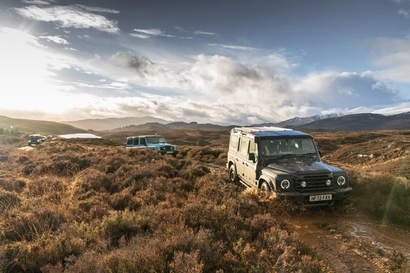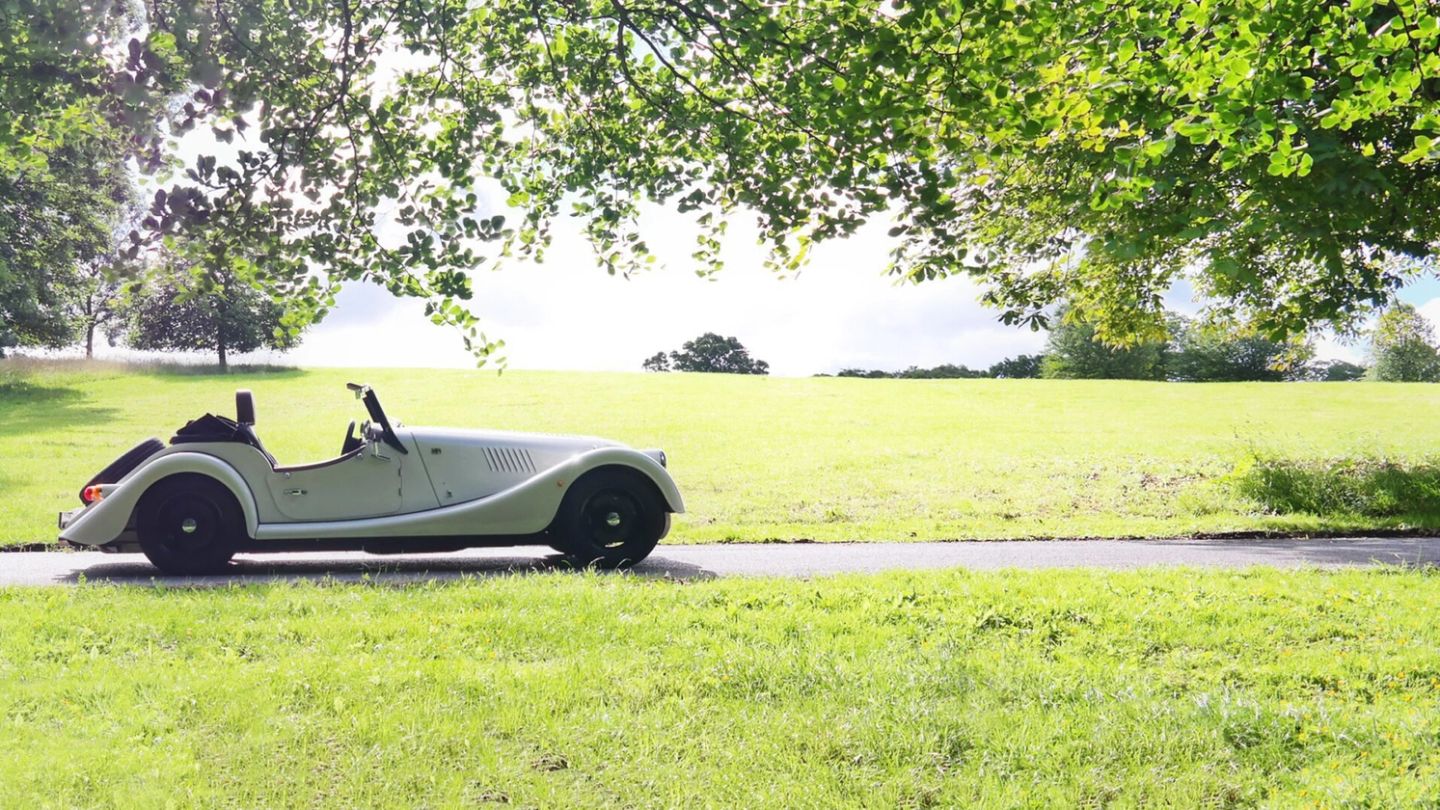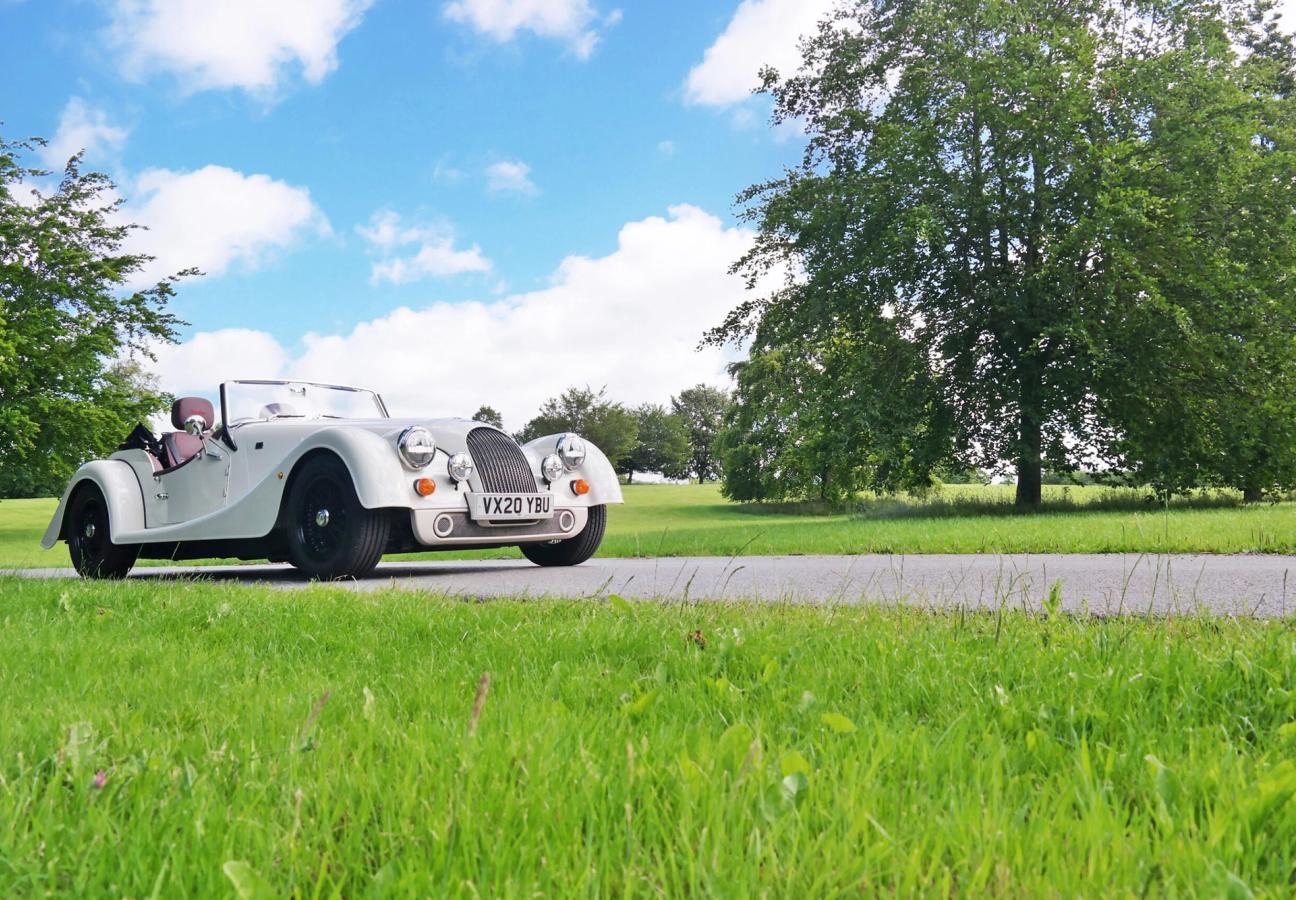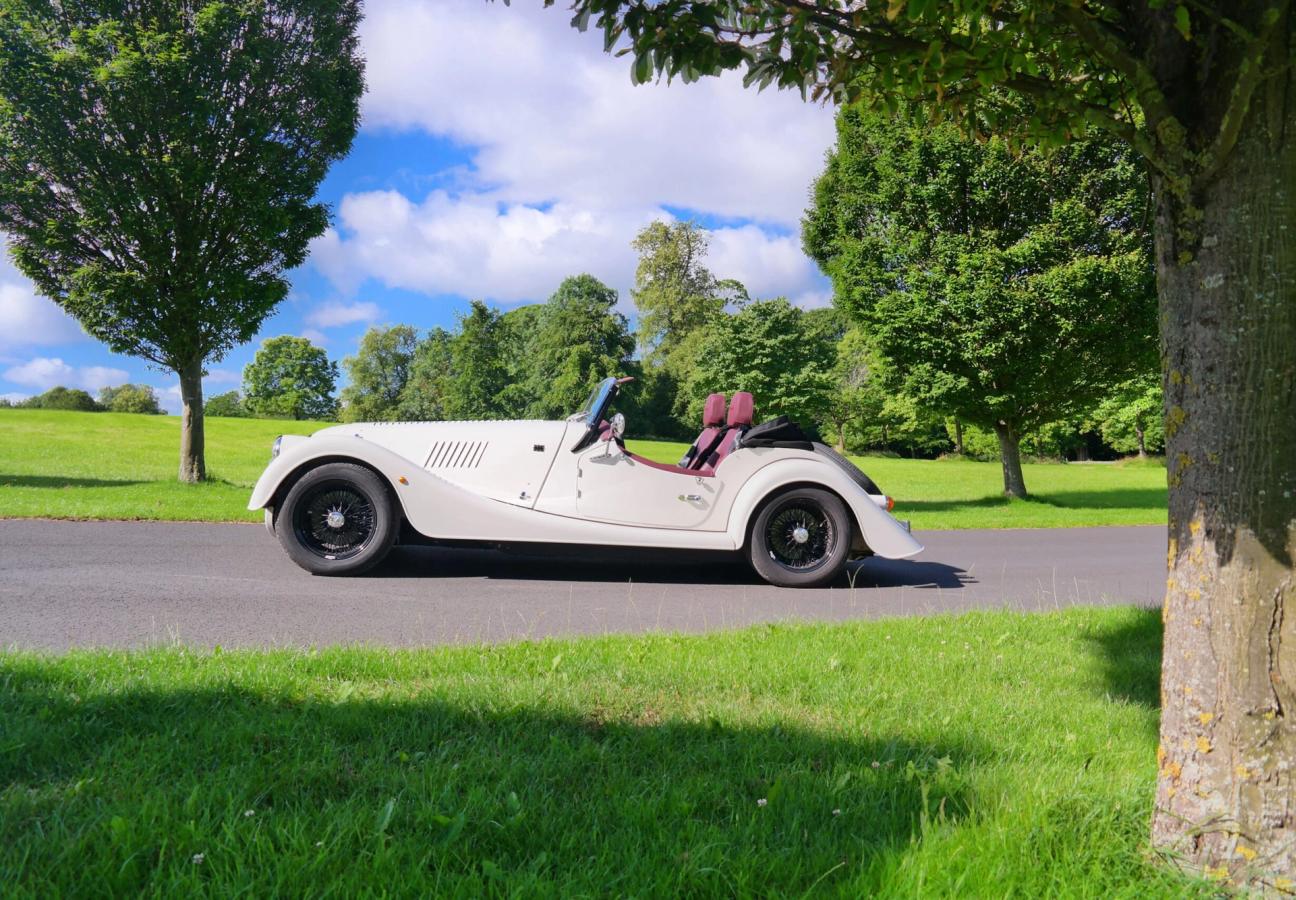

Words: Jonathan Wells
The roof may not be a difficult one to put down – but the wind would have you believe otherwise. Here, in the gusty grounds of Durham’s Wynyard Hall, I’m grappling solo with the folding fabric roof of a new Morgan Plus Four. It’s flapping about like an angry kite, the wind is picking up and I’m cursing the many catches and latches that should be clicking into place.
And yet there is a smile on my face. It’s not because roof-wrestling is a secret passion of mine; hell, if this were any other car, I’d likely have ripped the thing off already and stuffed it behind the seats. But I haven’t. For some reason — just like the car — I haven’t yet lost my top.
Maybe it’s because of the Plus Four’s round, trusting eyes. Maybe it’s the simple, cheery stretch of its unadorned dashboard. Or maybe it’s the gently faired lines that sweep down its side. I don’t know what it is, but I do know this: you can’t stay mad at a Morgan.
Of course, this is also quite a peaceful place — that could have something to do with my zen. If you look past the wild wind, Wynyard Hall is one of the most relaxing spots I could have picked for a bout of convertible combat. It’s all grand statues, rolling lawns and carefully trimmed trees. There’s even an obelisk poking up a couple of acres away — built in the early 19th Century to celebrate a visit from the Duke of Wellington. Today, of course, the Morgan is the only British icon about — but it’s just as impressive as the old Iron Duke.
I’ve been behind the wheel of the Plus Four for a couple of days now, and nowhere has it looked more at home. Rolling through Central London it seemed more novelty than native. On the motorway, though surprisingly sturdy, it didn’t feel like it was having fun. But here, amidst the ornamental lakes and walled gardens, the Plus Four has come into its aristocratic own — coasting around with the pomp and pageantry of a minor royal.

But, although most Morgans look like they’ve just steered off the sets of period dramas, there’s nothing antiquated about the British carmaker’s latest release. A couple of years ago, we tested the old Plus 4 (they’ve switched from numerals to letters for the new generation), and it felt almost reactionary — a machine driven pointedly and purposefully in a different direction than the modern auto industry. The new model does not.
In fact, compared to the Plus 4, the Plus Four may as well be a spaceship. To look at it, of course, you wouldn’t even know the difference. But therein lies the brilliance. Despite making some colossal changes — Morgan says that only 3% of the old incarnation’s parts and pieces made it into this car — it looks almost identical to the same old model that’s been built in Malvern, Worcestershire for years.
The most notable of these new developments is the chassis. The CX-Generation platform has been brought in to shake up the Morgan experience — the same bonded aluminium offering you’ll find on the Plus Six. It’s innovative, ergonomic and means more space inside the car without any perceptible changes to the exterior dimensions. Practically, it also means you don’t lose the Gatsby cool factor you’ve cultivated when you have to awkwardly clamber out.
So what else has changed? Taking the tight corners and negotiating the narrow lanes of the Wynyard Hall estate, the Morgan’s suspension springs to mind. Gone is the sliding pillar suspension of the Plus 4; replaced with an all-independent double wishbone system. Ride quality, as a result, is much improved — but the development almost nixed the inclusion of Morgan’s beautiful wire wheels. A little mechanical wizardry made sure the Morgan magic wasn’t lost, however — and the wheels remain firmly, and beautifully in place.
The standard equipment offered on the Plus Four also breaks from tradition. With a considerably higher level of finishing than any other comparable Morgan, you get power steering, air conditioning, a mohair hood and front undertray as standard.
Of course, not everyone is happy that they don’t even have the option to escape the mod-cons. There was an undercurrent of chuntering from enthusiasts when the old all-ash frame was diluted with aluminium — and the option of heated seats almost boiled their blood. But there are still traditional touches to appease the aficionados — hints of exposed timber by the door hinges, for example. And it’ll be the thoughtful touches such as these that’ll win them round in the end. After all, you can’t stay mad at a Morgan.
In the cabin, there are even more changes. But, while the new digital driver information display threatens to curb the retro appeal of the Plus Four, the great big dials on the central dash pull you right back into the vintage mix. Even the central locking, now standard, is a welcome addition to the Morgan package. The only option we’re slightly sceptical about? LED puddle lights. But on an option list as long as your arm, that’s not a bad hit rate.
Of course, everything comes with a price tag, but there are more choices and customisation options than ever before on the Plus Four. Aside from the four standard colours — this one is ‘Sport Ivory’ — there are another 19 to choose between, from ‘Classic Safari Yellow’ to ‘Metallic Alligator Green’. Two-tone paint is even available. You can trim the interior in everything from pebble grain leather to box weave carpet, and plump for dashboard veneers including Zebrano and Bubinga (you know a wood’s fancy when you’ve never even heard of it…)

Do you need all these extras? Probably not. Do you want them? Almost certainly. And it’s a lot of money, especially when the car starts at £62,995. You know that. I know that. Even Morgan knows that. But they also know this; the Plus Four isn’t really a car. True, it’s got four wheels, a gearbox, a windscreen and a fuel tank — but when you buy a Morgan, you’re buying more than just a machine. You’re buying sunny Sunday afternoons, the wind in your hair, turned heads and dropped jaws.
And, while it all looks very ‘National Trust’ driving about the grounds of a stately home, there’s a surprising level of practicality here, too. Nothing too extreme — this is still a low-slung, two-seater convertible sports car — but the new Plus Four is certainly more capable than its predecessor. And it’s smoother, feels safer and is more sturdy than anything else you’ll find at this size.
But you’re not buying a Morgan Plus Four for the practicality, are you? You’re probably not even buying it for speed — despite it doing an impressive 149 mph, you’d be better off with a Plus Six if you’re looking for power.
No, you’re buying a Plus Four for the lifestyle. Because wherever you care to drive one of these cheery roadsters, you’ll get a smile. On the motorway. Through a busy town centre. Down a rural background. It brings joy. And, even if you do get into a spot of traffic trouble, or rankle a fellow motorist, the bother won’t last for long. After all, you can’t stay mad at a Morgan.
Want more four-wheeled fun? Here’s why s Caterham is for life, not just for summer…
Become a Gentleman’s Journal member. Find out more here.


